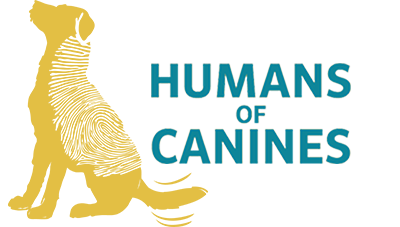By Atulya Gangaraju, Intern, Humans of Canines
A few years back, talking about mental health issues was frowned upon but as the years went by, the newer generations have become more and more aware of the importance of mental health and its implications on physical health issues. This article will be focusing on the psychological effects of the most commonly diagnosed physiological diseases/disorders today that affect all age groups.
When we talk about mental health, we are aware of the mainstream forms of therapy like Cognitive Behavioural Therapy, Rational Emotive Behavioural Therapy and so on but not everyone seeks such forms of therapy due to various reasons. Some of which are merely the inability to afford them, inaccessibility or lack of knowledge. And so, there are certain alternative forms of therapy that have come up that focus on helping individuals cope with the everyday stressors such as Animal Assisted Intervention, Creative Dance Movement Therapy, Hypnotherapy, Aromatherapy and so on. People often look at these alternative forms of therapy as they feel these are more accessible and more accepting of the problems. They often feel relaxed and less stressed when using these forms of therapies. This article will particularly focus on Animal Assisted Therapy and its effects on various commonly found illnesses.
Physiological :
Cancer
Affecting 1 in 10 Indians (both men and women) every year and with a total mortality rate of more than 6% according to the 2018 statistics (Online, 2020), cancer is caused by the overgrowth of certain cells and does not just affect one single part of the body but can affect any organ. It is essentially degenerative in nature, that is, it tends to take over the body slowly and is said to affect not only the patient but the people around them too. How doctors can detect cancer is with the identification of a lump, known as a tumour, that has to be malignant in nature. That being said, though it affects the physiology of the individual, it also affects the mental health of the individual like the added stress and trauma of going through chemotherapy and radiation, the stress and trauma of the family and friends around the patient, fear of death and so on.
In such cases, individuals diagnosed with cancer often seek therapy for the betterment of their mental health. Some seek mainstream forms of therapy and others seek alternative forms of therapy. One such form of alternative therapy is AAT.
How can AAT help individuals diagnosed with cancer? In the following ways as per the article published by Linda L. Buettner, et al. (2011):
- Individuals diagnosed with cancer are more accepting of AAT in the cancer centres as it reduced seems to reduce the levels of pain the patient is undergoing
- AAT helped the patient pass time quicker too
- Having a therapy animal also gave a sense of comfort to the patients
Another study by White & Quinn (2015) gave the following ways AAT has affected individuals diagnosed with cancer:
- The presence of a therapy animal has made it easier for patients to attend counselling sessions for coping with the process of going through chemotherapy and radiation, the pain of the after-effects.
- The presence of a therapy animal has also proven to be a way of keeping anxiety and stress levels under control for the family and friends as well as the patient with cancer themselves
Geriatric :
Dementia
Close to 4% of the Indian population is affected by some form of dementia once they reach 60+years. Dementia, also known as a geriatric degenerative syndrome, commonly affects the memory, thinking, behaviour and the ability to perform daily chores among the elderly. Dementia can be a result of genes or some other injuries or diseases like stroke, Alzheimer’s’ and so on. There are essentially 3 stages that have symptoms such as forgetfulness, difficulty in communication and drastic changes in behaviour and mood respectively. The following are ways in which AAT can help with patients with Dementia according to a study conducted by Majić, Gutzmann, Heinz, Lang, & Rapp, (2013):
- AAT has helped with controlling mood swings among patients with Dementia
- It has also proven to be a way of slowing down the process of deterioration of the illness
- Having a therapy animal also seemed to provide a sense of calm and composure.
Psychological Disorders
Anxiety and Depression
Statistically said to be 2 of the most common mental health issues recorded in India, Anxiety (affects 14.3% of total Indian population) is characterised primarily by excessive worrying or fearful of events, people, things and/or places. A few trademark symptoms of anxiety can be breathlessness, sweating, trembling, increased heart rate and so on. Depression (affects 13.4% of total Indian population), classified as a mood disorder by the DSM-V, is characterised by feelings of loss, sadness or anger that is said to interfere with an individual’s daily life. A few trademark symptoms of depression are reduced interest to do anything, persistent low mood, inability to move, loss of appetite and sleep or excess of sleep and eating habits and so on. The major criteria that have to be kept in mind while claiming abnormality, that is the 4 D’s, that is, Dysfunction (the loss of certain functions of the patient), Deviance (a state of being different from usual in terms of behaviour or otherwise), Distress (extreme amounts of stress and pain), and Danger (to oneself or others). How seeking the help of a therapy animal can help patients with depression and anxiety are according to a study done by Jones, Rice, & Cotton, (2019) are:
- Therapy animals are known to provide a sense of comfort to the individuals and so can reduce the levels of anxiety and provide a safe environment to share
- Therapy animals, specifically therapy dogs, reduce the individual’s heart rate and calm the person
- Canine assisted therapy is also proven to have a positive impact on the diagnosis and symptomatology of depression in adolescents that can be caused due to exam stress, peer pressure, parental pressure or even everyday stressors
Attention Deficit Hyperactivity Disorder (ADHD)
Affecting almost 15% of the Indian children population between the age group of 5-10 years, Attention Deficit Hyperactivity Disorder (ADHD), as the name suggests, is a disorder characterised by abnormal levels of hyperactivity and impulse that begins in childhood and can go into adulthood if not addressed. Common symptoms can include irritability, aggression, fidgeting, mood swings, lack of concentration and so on. How AAT can help with ADHD is seen in a study conducted by Sabrina E. B. Schuck (2013):
- AAT helped in improving the socialisation skills of the child diagnosed with ADHD
- It also helped in managing the mood swings of the child diagnosed with ADHD
- AAT also helped to encourage the child diagnosed with ADHD to behave in a socially acceptable manner, that is prosocial behaviour
To conclude, though there are various types of therapies that can help individuals diagnosed with various physiological diseases/disorders to cope with the stress and anxiety that comes with the process of identification, treatment and recovery, Animal Assisted Therapy has proven to be one of the acceptable and effective alternative forms of therapy that works alongside other forms of therapy.
References:
- Jones, M., Rice, S., & Cotton, S. (2019). Incorporating animal-assisted therapy in mental health treatments for adolescents: A systematic review of canine-assisted psychotherapy. Retrieved October 12, 2020, from https://journals.plos.org/plosone/article?id=10.1371%2Fjournal.pone.0210761
- Linda L. Buettner, P., et al. (2011). Perceived benefits of animal-assisted therapy in the oncology waiting room. Retrieved October 12, 2020, from https://www.wmpllc.org/ojs/index.php/ajrt/article/view/2173
- Majić, T., Gutzmann, H., Heinz, A., Lang, U., & Rapp, M. (2013, July 03). Animal-Assisted Therapy and Agitation and Depression in Nursing Home Residents with Dementia: A Matched Case-Control Trial. Retrieved October 12, 2020, from https://www.sciencedirect.com/science/article/abs/pii/S1064748113001784
- McMillin, T. (2020, September 1). Animals and Autism: A Promising Treatment Approach. https://www.relias.com/blog/animal-assisted-therapy-for-autism
- Online, F. E. (2020, February 4). World Cancer Day 2020: Alarming! One in 10 Indians will develop cancer in their lifetime, says WHO. https://www.financialexpress.com/lifestyle/health/world-cancer-day-2020-alarming-one-in-10-indians-will-develop-cancer-in-their-lifetime-says-who/1855818/
- Sabrina E. B. Schuck, N. A. E. (2013). Canine-Assisted Therapy for Children With ADHD: Preliminary Findings From The Positive Assertive Cooperative Kids Study – Sabrina E. B. Schuck, Natasha A. Emmerson, Aubrey H. Fine, Kimberley D. Lakes, 2015. SAGE Journals. https://journals.sagepub.com/doi/abs/10.1177/1087054713502080
- White, J. H., & Quinn, M. (2015, April 20). Animal-Assisted Therapy and Counseling Support for Women With Breast Cancer: An Exploration of Patient’s Perceptions. Retrieved 2020, from https://journals.sagepub.com/doi/full/10.1177/1534735415580678
WHO. (2019). Autism spectrum disorders. https://www.who.int/news-room/fact-sheets/detail/autism-spectrum-disorders.




